Once upon a time, before social media trends and TikTok candy reviews, there was a golden era of candy bars that ruled lunchboxes, corner stores, and after-school cravings. These weren’t just sugary snacks—they were experiences. They had quirky names, bold wrappers, and flavors that still linger in the memories of those lucky enough to grow up with them. But somewhere along the way—maybe in a corporate boardroom or thanks to shifting tastes—these iconic treats quietly disappeared.
Ask any candy lover over 40 about the Marathon Bar’s braided caramel, the fizzy anticipation of a 7 Up Bar with seven mystery fillings, or the crispy crunch of PB Max, and watch their eyes light up. These candy bars weren’t just part of childhood—they were childhood. And now? You’d be hard-pressed to find anyone under 30 who’s even heard of them, let alone tasted their nostalgic magic.
Some were discontinued due to changing tastes. Others fell victim to corporate mergers, peanut-allergy concerns, or simply got lost in the shuffle of newer, shinier sweets. But all of them earned their place in the candy hall of fame—and their quiet exits left loyal fans with one lingering question: Why did they ever go away?
In this list, we’re unwrapping 23 of the most beloved vintage candy bars that once ruled the snack scene. Whether they were chocolaty, crunchy, nougaty, nutty, or just plain weird (we’re looking at you, Chicken Dinner Bar), these treats were once household names—and now, they’ve faded into near myth. Get ready for a bittersweet trip down memory lane—these are the forgotten candy bars that deserve a comeback, or at least one last wrapper-rustling round of applause.
1. Reggie! Bar
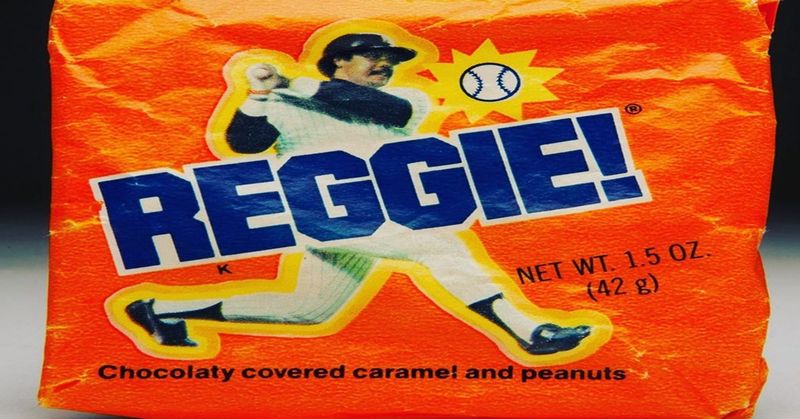
Named after baseball superstar Reggie Jackson, this circular chocolate delight caused quite a stir when it debuted. The combination of creamy chocolate, crunchy peanuts, and gooey caramel made it a home run with fans.
Originally distributed at Yankee Stadium during the 1978 season, the candy celebrated Jackson’s incredible three-homer World Series performance. Kids would pretend to be the slugger while enjoying their Reggie! Bars.
Standard Brands discontinued this treat in the 1980s, though it briefly returned in the 1990s as a nostalgic limited edition.
2. Marathon Bar
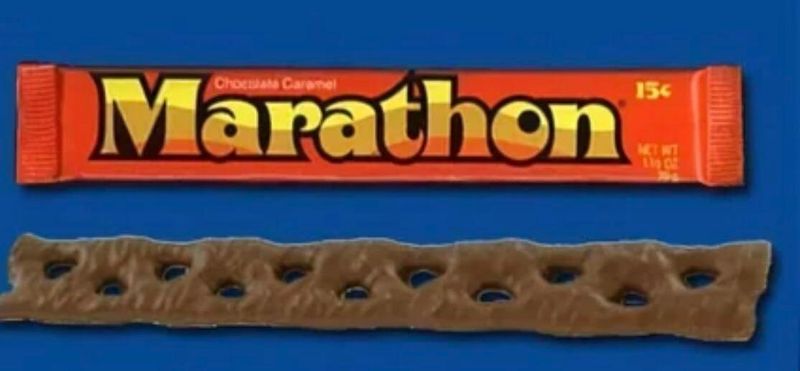
Stretching an impressive 8 inches long, the Marathon Bar wasn’t just candy—it was a challenge. The braided caramel covered in milk chocolate became famous for its ruler-printed wrapper that showcased its extraordinary length.
Mars introduced this lengthy treat in August 1973, marketing it with the slogan “Marathon lasts a good long time.” Children would compete to see who could make their bar last longest, carefully nibbling to extend the enjoyment.
Despite its popularity, Marathon disappeared from American shelves by 1981, leaving behind its memorable red packaging and impressive dimensions.
3. PB Max
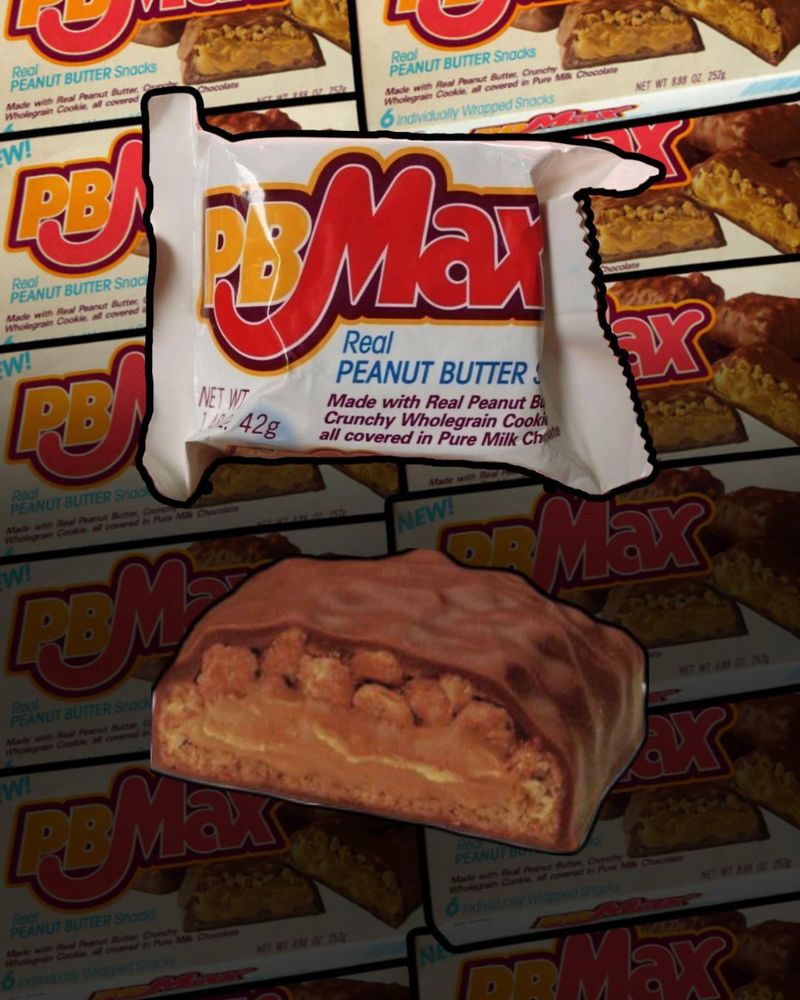
Crunchy cookie, creamy peanut butter, and smooth milk chocolate—PB Max had it all. This square-shaped delight featured a substantial cookie base topped with a generous layer of real peanut butter, all enveloped in milk chocolate.
Launched by Mars in the late 1980s, PB Max quickly developed a devoted following. What makes its discontinuation particularly strange is that it was reportedly selling $50 million worth annually.
The peculiar reason behind its demise? Rumors suggest the Mars family simply disliked peanut butter and pulled the plug despite its commercial success—a heartbreaking decision for fans.
4. Bar None
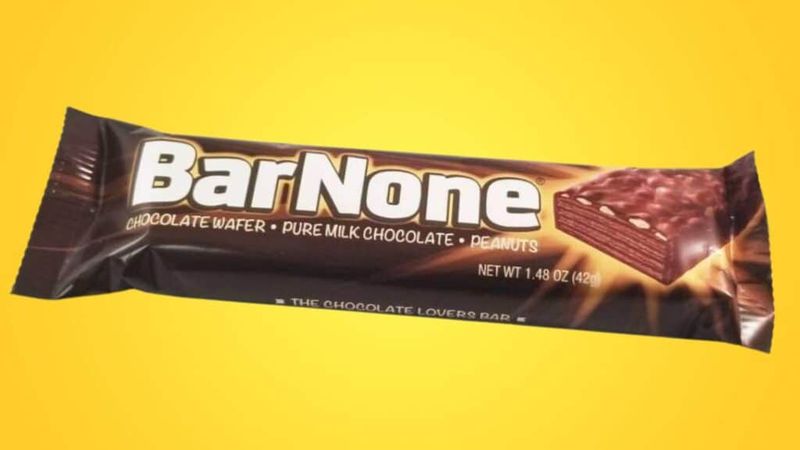
Chocolate wafers layered with chocolate cream, topped with crushed peanuts and covered in rich milk chocolate—Bar None was a textural masterpiece. Hershey’s introduced this indulgent treat in 1987, instantly winning over chocolate lovers with its perfect balance of crunch and creaminess.
Originally packaged as a single bar, Hershey’s later split it into two thinner pieces and added caramel to the mix. Fans considered this reformulation a misstep that altered the bar’s unique appeal.
By 1997, this once-beloved candy quietly vanished from store shelves, leaving fans searching for anything that might replicate its distinctive flavor profile.
5. 7 Up Bar
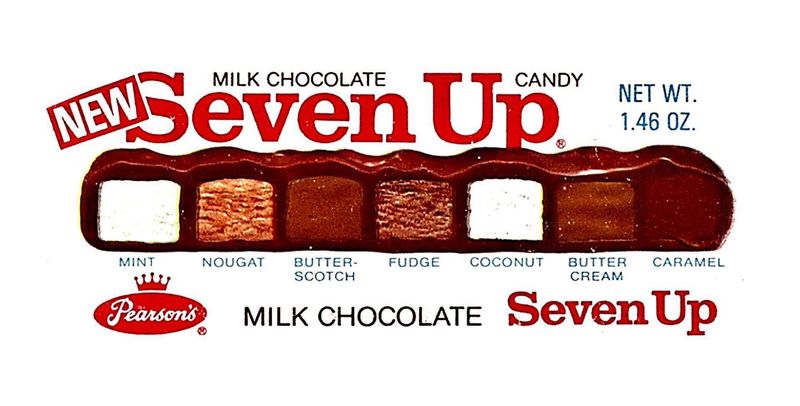
Imagine unwrapping a chocolate bar to discover seven different flavor adventures waiting inside! The 7 Up Bar (unrelated to the soda) featured seven distinct compartments, each filled with a unique flavor like cherry, coconut, butterscotch, or maple.
Made by the Pearson Candy Company starting in the 1930s, this variety-packed treat let kids sample multiple flavors in one sitting.
The segmented design made it perfect for sharing with friends—though many preferred to keep all seven pieces to themselves. Production ended in the late 1970s, long before most candy bars began offering flavor variations.
6. Milkshake Bar
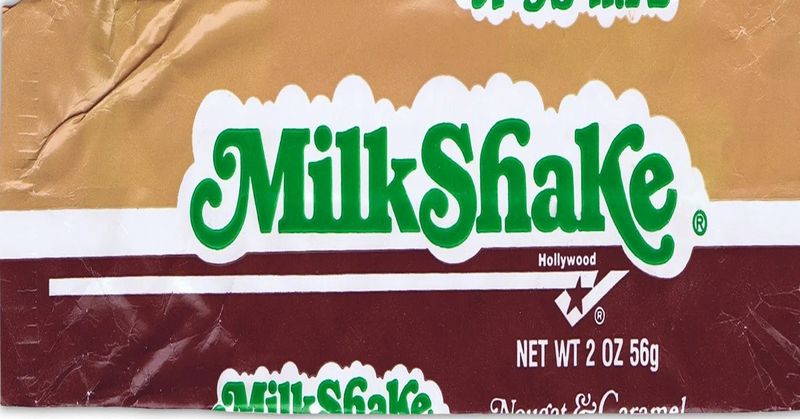
Unwrapping a Milkshake Bar was like sipping a frozen treat through a straw—minus the brain freeze. Hollywood Candy Company crafted this malted milk chocolate wonder to capture the nostalgic flavor of an old-fashioned soda fountain milkshake.
Popular from the 1950s through the 1970s, the rectangular bar featured a distinctive malted milk flavor that transported kids straight to their favorite diner. The smooth, creamy texture melted perfectly on the tongue.
While modern malt balls offer a similar taste, nothing quite matches the experience of enjoying this bar while sitting on a bike with friends after school.
7. PowerHouse
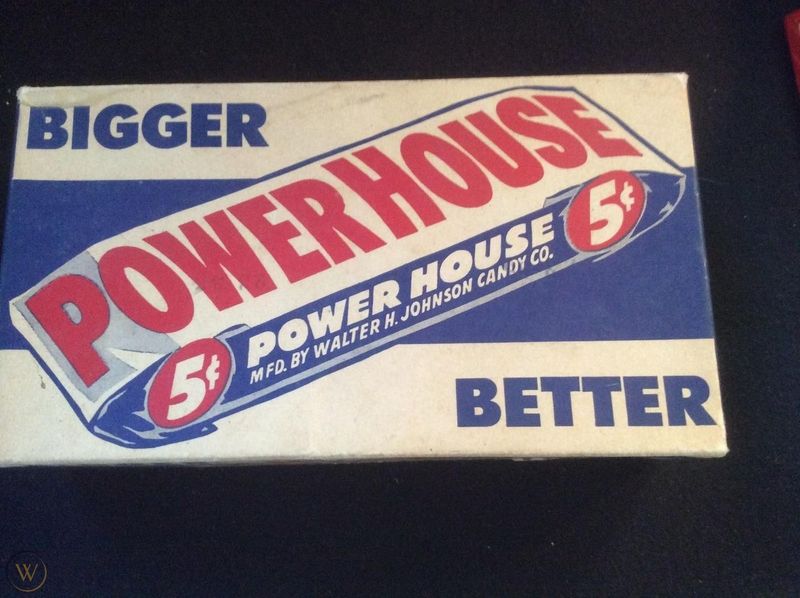
PowerHouse lived up to its name with a mighty combination of fudge, peanuts, and caramel that required serious jaw strength. This substantial candy bar from the Walter H. Johnson Candy Company wasn’t for the faint-hearted—its dense, chewy texture could keep kids occupied for ages.
Launched in the 1940s, PowerHouse was marketed as an energy-boosting treat, perfect for active youngsters. The distinctive yellow wrapper featured a muscular arm, promising strength with every bite.
By the 1980s, this heavyweight contender had disappeared from the candy scene, though its memory lives on with those who appreciated its satisfying heft.
8. Butter-Nut Bar
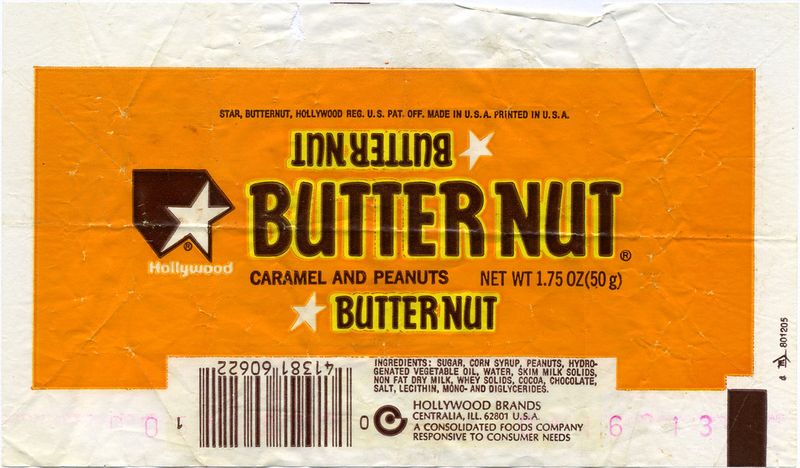
Sweet memories of the Butter-Nut Bar still make candy enthusiasts smile. Hollywood Candy Company created this delectable combination of milk chocolate, freshly roasted peanuts, and smooth nougat center that melted beautifully with each bite.
The rectangular treat gained popularity in the 1950s and 1960s, standing out with its distinctive red and yellow packaging. Unlike many nut-filled candies, Butter-Nut achieved a perfect balance between creaminess and crunch.
Eventually acquired by Nestlé, the beloved bar faded away by the 1970s, leaving fans to search for similar flavor combinations that never quite matched the original.
9. Caravelle Bar
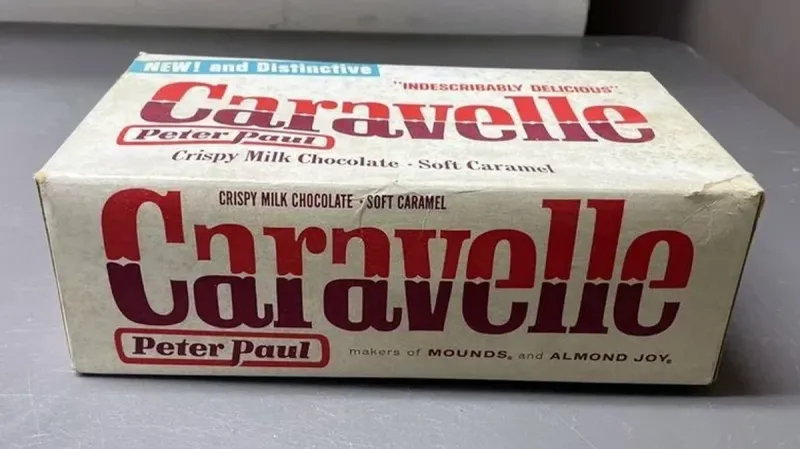
Crispy, crunchy, and utterly delightful—the Caravelle Bar combined the best textures in candy form. Created by Peter Paul (the makers of Mounds and Almond Joy), this delectable treat featured airy crisped rice, chewy caramel, and fluffy nougat all wrapped in milk chocolate.
Introduced in the 1960s, the Caravelle offered a satisfying multi-layered experience that kept kids coming back for more. Its name evoked exotic adventures, matching its exciting flavor combination.
Despite its devoted following, the Caravelle disappeared from candy aisles in the 1970s, leaving a textural void that even modern candy bars struggle to fill.
10. Choco’Lite
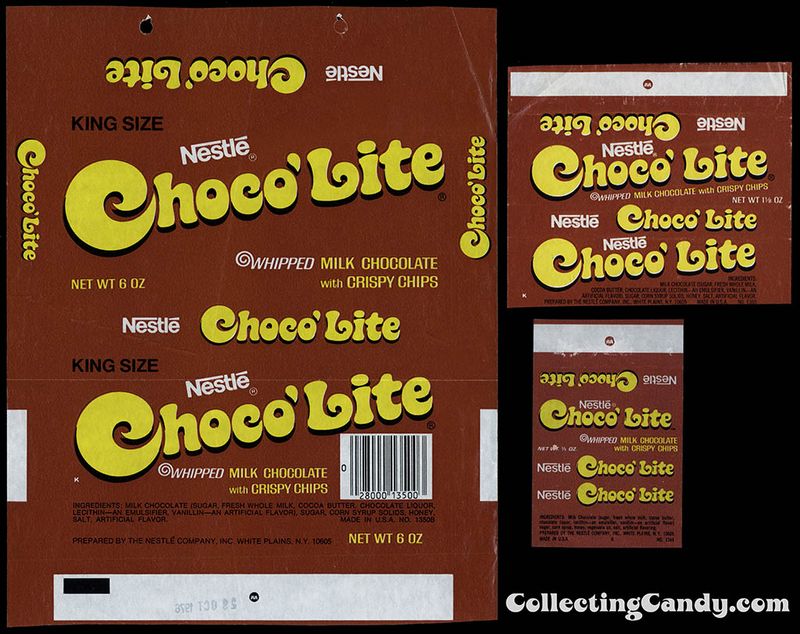
Biting into a Choco’Lite was a magical experience—the aerated chocolate created a unique bubbly texture that seemed to melt instantly on your tongue. Nestlé introduced this innovative treat in the 1970s, featuring tiny air bubbles throughout the chocolate and crisped rice pieces for added crunch.
Kids were fascinated by how light the bar felt compared to solid chocolate. The whipped texture made it seem like you were eating chocolate clouds!
Production ceased in the 1980s in the United States, though similar textured chocolates like Aero bars continue to be popular internationally.
11. Clark Bar
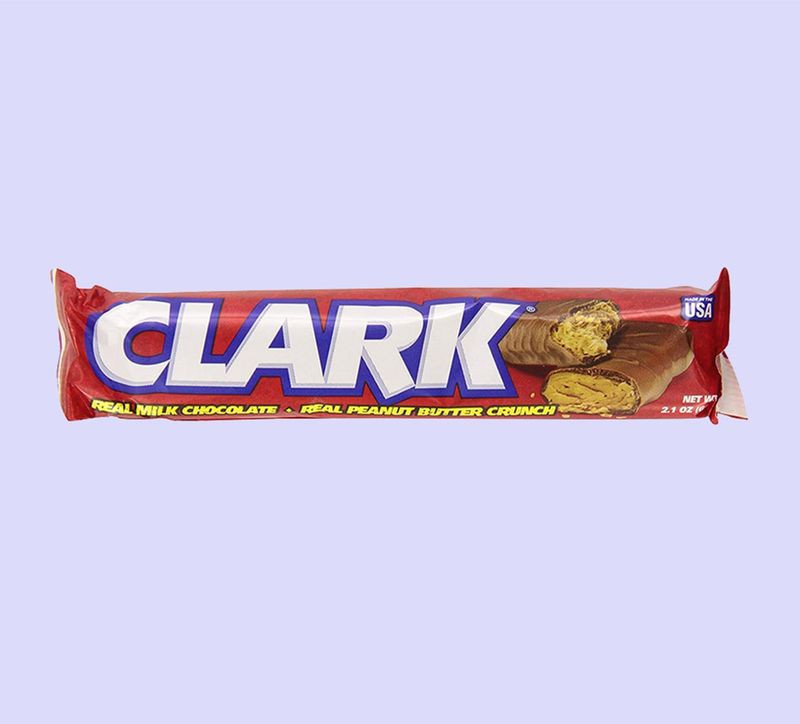
Born in Pittsburgh in 1917, the Clark Bar became an American classic with its irresistible combination of crunchy peanut butter center and sweet toffee wrapped in milk chocolate. Created by Irish immigrant David L. Clark, this patriotic treat was even included in military rations during World War II.
The distinctive red wrapper with bold yellow lettering became a staple in candy aisles for generations. Children would save their pennies to purchase this affordable luxury during the mid-century.
While the Clark Bar has changed ownership multiple times and occasionally disappears, it has managed to survive in limited distribution—making it a rare success story among vintage candies.
12. Whatchamacallit (Original Recipe)

The original Whatchamacallit was a completely different candy from what you’ll find today. Launched by Hershey’s in 1978, it initially featured just crispy peanut butter layers covered in chocolate—simple but irresistible.
Kids loved the quirky name almost as much as the candy itself. Commercials featured people struggling to remember what it was called, creating a memorable marketing campaign that stuck in young minds.
In 1987, Hershey’s added caramel to the recipe, fundamentally changing the bar’s character. Those who remember the original version insist it was superior, with a lighter, crispier texture that disappeared with the reformulation.
13. Rally Bar
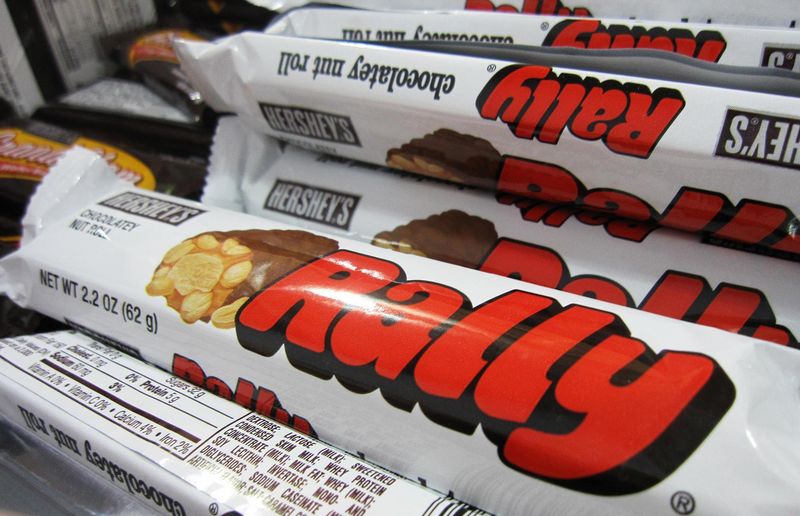
Hershey’s created the Rally Bar in the 1970s as a direct competitor to the wildly popular Snickers. This ambitious challenger combined nougat, chocolate-covered peanuts, and caramel coated in milk chocolate—a winning combination on paper.
The wrapper featured a distinctive checkered racing flag design, suggesting the energy boost the candy would provide. Despite its delicious recipe and clever marketing, Rally never quite captured the same market share as its Mars-made rival.
By the mid-1980s, Hershey’s waved the white flag and discontinued the Rally Bar, proving that even excellent candy formulations sometimes fail to cross the finish line in the competitive chocolate race.
14. Zagnut
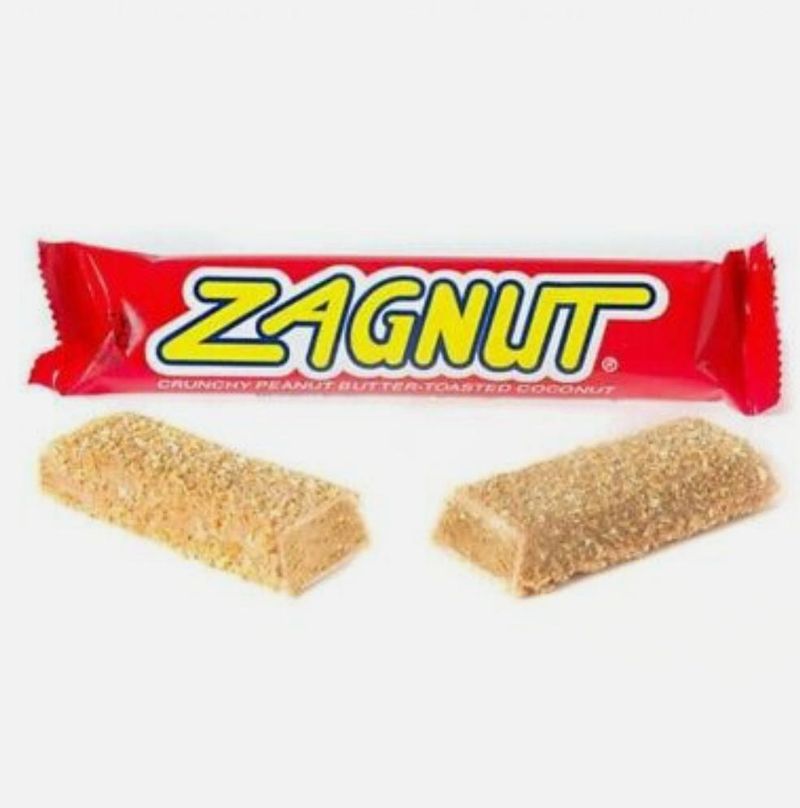
Standing out in a chocolate-dominated world, the Zagnut boldly featured no chocolate whatsoever! This unique candy bar combined a crunchy peanut butter brittle center completely coated in toasted coconut flakes, creating a sweet-and-salty flavor profile unlike anything else.
Created by the D.L. Clark Company in 1930, the Zagnut developed a devoted following who appreciated its distinctive texture and taste. The unusual name added to its quirky appeal, making it memorable even among dozens of competitors.
Though harder to find than mainstream bars, Zagnut has survived through various ownership changes and remains available in select locations—a true testament to its unique recipe.
15. Choco’Mallow

Pure confectionery magic happened when fluffy marshmallow met smooth chocolate in the beloved Choco’Mallow bar. This delightful creation featured a generous marshmallow center completely enrobed in creamy milk chocolate, creating a pillowy-soft eating experience.
Popular throughout the 1950s and 1960s, this simple yet effective combination delivered pure comfort with every bite. Children would often save these for last in their candy collections, knowing the special treat that awaited them.
While the exact manufacturer details have faded with time, the memory of that perfect marshmallow-chocolate balance lives on in the minds of candy lovers from that golden era of confectionery innovation.
16. Idaho Spud
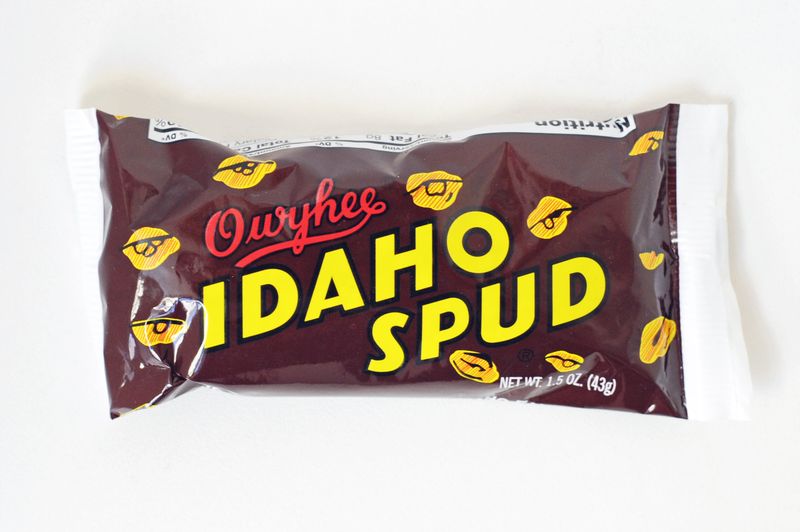
Don’t let the name fool you—there’s no potato in this whimsical treat! The Idaho Spud bar features a soft, cocoa-flavored marshmallow center covered with a thin layer of dark chocolate and sprinkled with coconut flakes, all shaped like a russet potato.
Created in 1918 by the Idaho Candy Company, this regional favorite from the Pacific Northwest has maintained its quirky appeal for over a century. The distinctive purple and brown packaging makes it instantly recognizable to those in the know.
Unlike most discontinued candies, the Idaho Spud continues limited production today, allowing new generations to experience this unusual combination of flavors and textures.
17. Sky Bar

Four unique flavor experiences in one candy bar made the Sky Bar truly special. Created by Necco in 1938, each segment contained a different filling: rich caramel, vanilla cream, peanut butter, and fudge—all covered in milk chocolate.
The distinctive divided design allowed candy lovers to sample multiple flavors or save their favorites for last. Kids would debate which section was best, with fierce loyalty to their preferred filling.
When Necco closed in 2018, it seemed the Sky Bar was finished, but thankfully a small company purchased the rights and resumed limited production in 2019—saving this innovative candy from permanent extinction.
18. Oompas
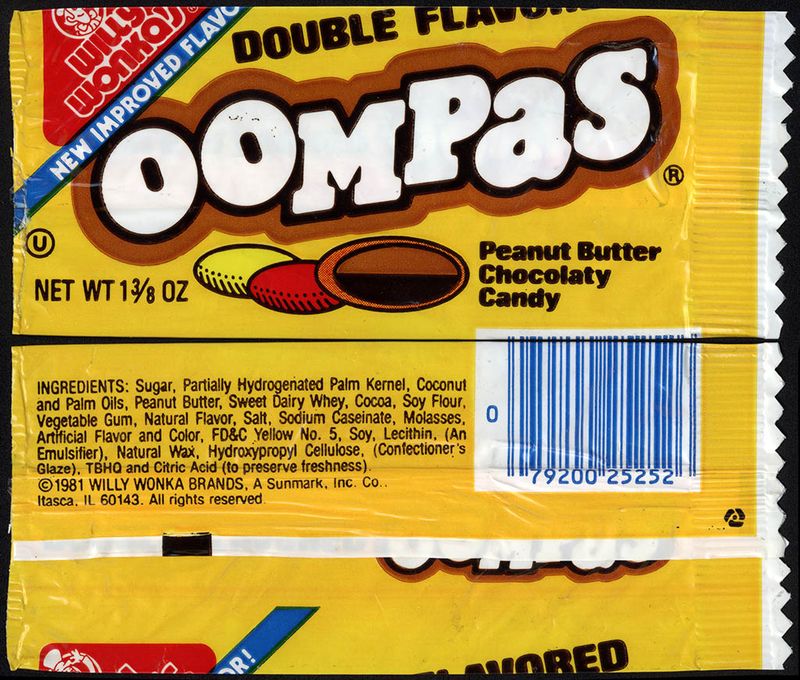
Inspired by the fictional Oompa Loompas from “Willy Wonka & the Chocolate Factory,” these colorful candy discs brought pure imagination to real life. Similar to oversized M&M’s but with a delicious peanut butter and chocolate center, Oompas featured a candy shell in vibrant orange and brown hues.
Launched by Willy Wonka Candy Company (Sunmark Corporation) in the 1970s, these treats capitalized on the film’s popularity. The distinctive packaging featured the whimsical Wonka branding that kids found irresistible.
By the 1980s, Oompas disappeared from candy counters, joining other Wonka creations in the factory of discontinued treats.
19. Milkshake (Caramel Version)
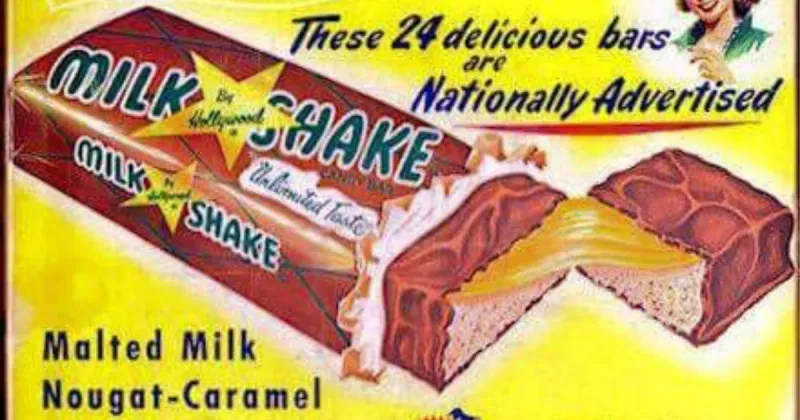
Taking the beloved Milkshake bar to new heights, the caramel variant added an extra layer of indulgence. This special edition combined the original’s malted milk chocolate with ribbons of sweet, buttery caramel throughout.
The addition of caramel created a more complex flavor profile that many fans considered superior to the original. The golden-hued wrapper distinguished it from its plain counterpart on store shelves.
Like its predecessor, this caramel-enhanced version disappeared from production in the 1970s. Modern attempts to recreate its distinctive flavor combination have failed to capture the nostalgic taste that made it so special to children of that era.
20. Bit-O-Chocolate
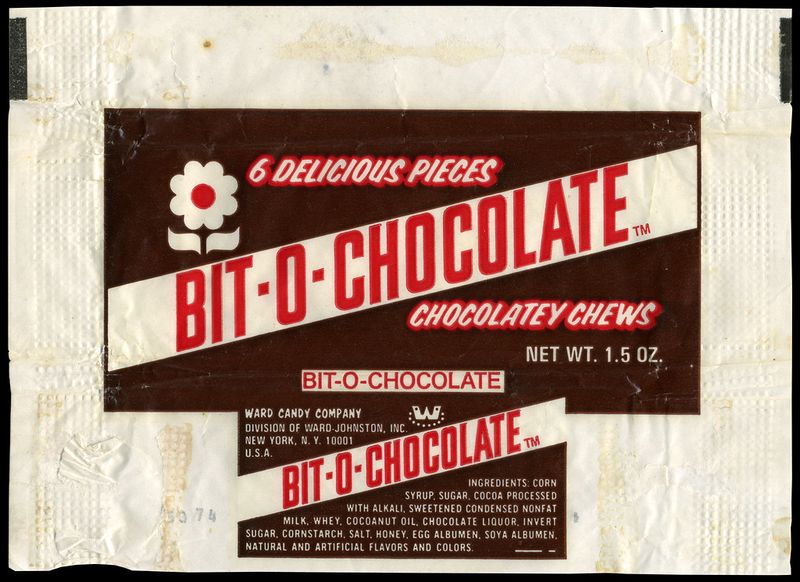
Building on the success of their chewy Bit-O-Honey, the Schutter-Johnson Company created Bit-O-Chocolate in the 1950s. This variation maintained the distinctive rectangular segments and taffy-like texture but replaced the honey flavor with rich chocolate and a hint of molasses.
Each wrapper contained six bite-sized pieces that could be broken apart and shared—though many kids preferred to keep all six pieces for themselves! The chewy consistency meant each piece lasted longer than typical chocolate.
As tastes changed in the 1970s, this unique chocolate taffy hybrid gradually disappeared from store shelves, leaving Bit-O-Honey as the sole survivor of the family.
21. Chicken Dinner Bar
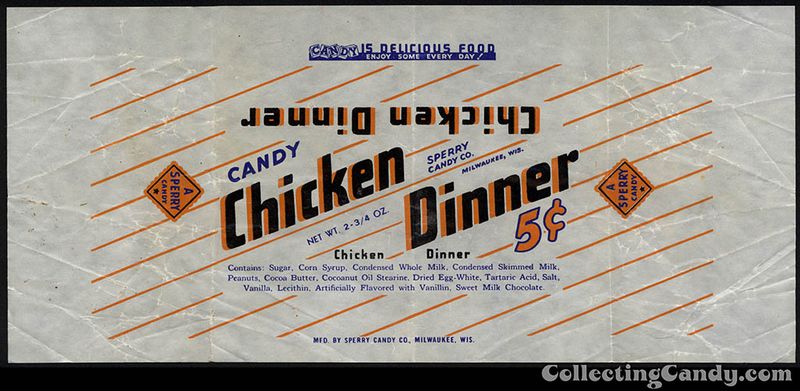
Despite its puzzling name, the Chicken Dinner Bar contained no poultry whatsoever! This chocolate-covered nut roll created by the Sperry Candy Company in 1923 featured a mix of peanuts and other nuts bound together with caramel and nougat.
The unusual name was actually clever marketing during the Great Depression, suggesting substance and value when many families struggled to afford actual chicken dinners. The wrapper featured a plump roasted chicken, further confusing modern candy enthusiasts.
This oddly-named treat continued production until the 1960s, when it finally flew the coop and disappeared from American candy counters.
22. Forever Yours Bar
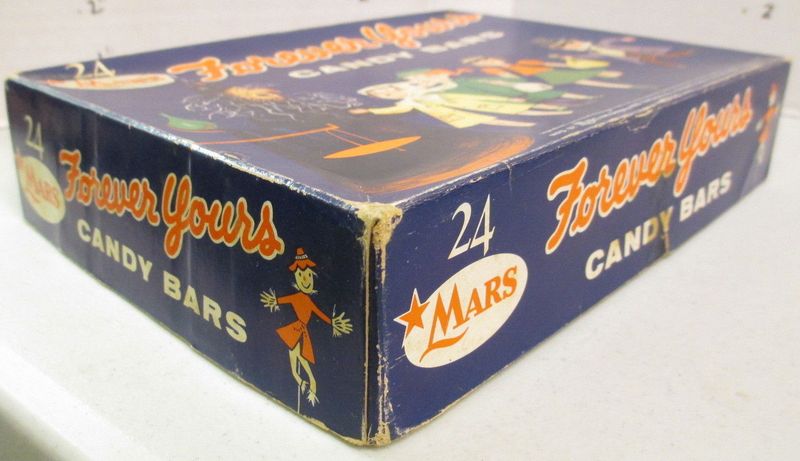
Before dark chocolate became trendy, Forever Yours offered a sophisticated alternative to milk chocolate lovers. Introduced by Mars in 1936 as the dark chocolate counterpart to Milky Way, this elegant bar combined vanilla nougat and caramel covered in semi-sweet chocolate.
The romantic name suggested a more adult-oriented treat, though plenty of children developed a taste for its less-sweet flavor profile. Its distinctive silver wrapper with red lettering made it easy to spot in candy displays.
Mars discontinued Forever Yours in 1979, though they later introduced Milky Way Midnight, which many consider its spiritual successor—proving good chocolate ideas never truly die.
23. Summit Bar
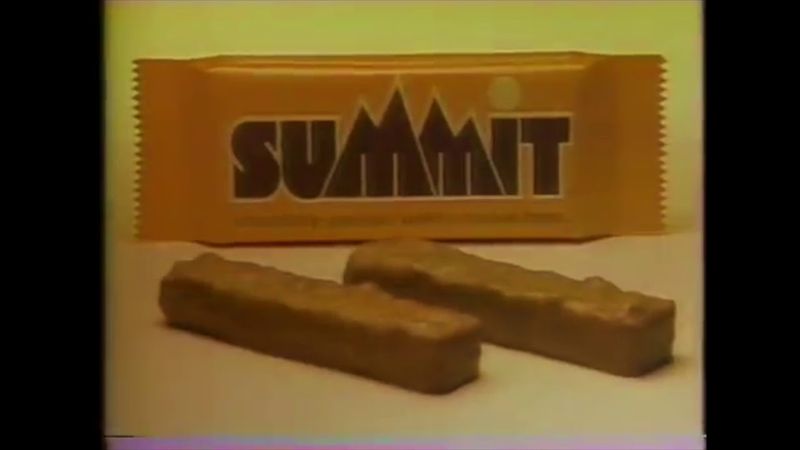
Reaching the peak of candy innovation, the Summit Bar combined crispy wafers, crunchy peanuts, and smooth chocolate in a unique twin-bar format. Introduced by Mars in the 1980s, each package contained two connected bars, perfect for sharing or saving half for later.
The lightweight, crispy texture made Summit stand out from denser competitors. Its mountain-themed packaging featured snowy peaks, suggesting the ultimate chocolate achievement.
Despite positive reception, Summit disappeared after only a few years on the market. The short lifespan has made it particularly elusive in candy nostalgia, with many people remembering the distinctive taste but struggling to recall its name.
Leave a comment